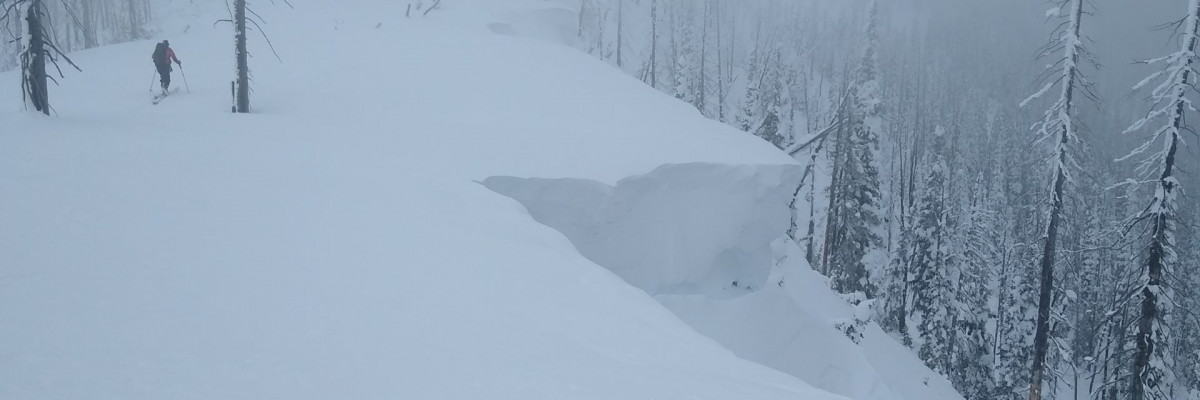The avalanche danger is MODERATE in wind loaded terrain and Low in all other terrain the west central Montana backcountry.
Good morning, this is Jeff Carty with the West Central Montana avalanche advisory for March 3, 2020. Today’s advisory is sponsored by The Trail Head. This advisory does not apply to operating ski areas, expires at midnight tonight, and is the sole responsibility of the U.S. Forest Service.
Weather and Snowpack
Mountain temperatures will be warm today, potentially rising to 40º above 6000′. Below 6000′ temperatures have already risen to above 32º. The snow line will be around 5000′. Winds are strong, 35 mph with gusts of 50 mph out of the west. Gusts to 60 mph are possible. We’ve had between 1″-3″ new snow overnight and 1″-2″ is forecast for today. Tonight holds the possibility of a bit more snow, 3″-4″ in the Seeley-Swan area and 1″-2″ elsewhere in the forecast area.
Overall our snowpack has consolidated well after Friday’s warm temps. If instabilities exist they are very isolated. These include buried surface hoar in very sheltered north aspects and some shallow crust/facet combos around last week’s crusts. They are worth investigating with a pit if you are skiing steep terrain.
The primary avalanche problem is wind slabs. Yesterday in the Rattlesnake, Bitterroot and Lolo Pass we observed wind slabs beginning to form. Overnight winds to 50mph built these further and they will continue to grow throughout the day with gusts forecast to 60mph. Winds are forecast to affect lower elevations so windslab may be more widespread than normally encountered. Be aware of cross loading as you travel in the mountains today.
Wet loose avalanches may be an issue at elevations lower than 6000′ today, where temperatures are forecast to rise as high as 47º.
In the southern Bitterroot, depth hoar at the bottom of the snowpack is still a concern. Choose a shallow spot to dig. If you find weak sugary snow at the bottom of your pit, choose a different slope where this structure is not present.
Bottom Line
Strong winds are building wind slabs at a variety of elevations, avoid steep wind loaded terrain. Very isolated pockets of a buried surface hoar and crust/facet layer exist. Perform a pit test to evaluate these layers. Depth hoar in the southern Bitterroot is a low likelihood, high consequence problem and still deserves caution. Wet loose avalanches may be a concern below 6000′ today. Travel one at a time in avalanche terrain, carry a beacon, shovel, and probe, and stay alert for signs of instability. Look for red flags. Give cornices a wide berth.
Education
Your observations are extremely helpful! If you get out, please take a minute to fill out the observation form on our website (missoulaavalanche.org), or shoot us a quick email at [email protected].
We offer a variety of avalanche courses throughout the winter. Go to our course offerings page on our website. Check out the list and get yourself enrolled in one of our many courses this winter!
Ski and ride safe.














